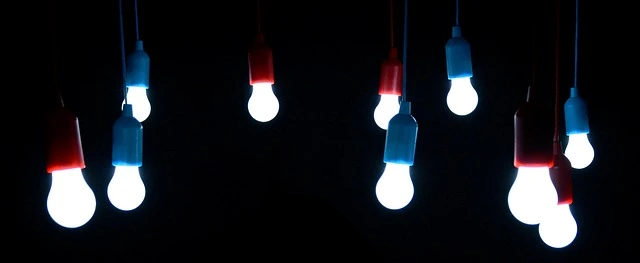Flashing or flickering dimmable LED lights can be frustrating and may indicate underlying issues with your lighting setup. This comprehensive guide will walk you through the potential causes and provide step-by-step solutions to resolve the problem.
What Are Dimmable LED Lights?
Dimmable LED lights are a type of LED (Light Emitting Diode) lighting that allows for adjustable brightness levels. Unlike standard LED lights, which operate at a fixed brightness, dimmable LEDs can be adjusted from full brightness to a softer, more subdued level using a compatible dimmer switch. This adjustability makes them versatile for various settings and purposes, from creating a relaxing ambiance to providing bright task lighting.
Key Features and Benefits
Adjustable Brightness
Dimmable LED lights offer the ability to modify the light output from full brightness to a softer, more subdued level. This is particularly useful in creating different moods and atmospheres in a space, whether it’s for relaxing, reading, or entertaining.
Energy Efficiency
LED lights are known for their energy efficiency, and dimmable LEDs take this a step further. When dimmed, these lights consume less power, thereby reducing energy costs and extending the life of the bulb.
Extended Lifespan
Operating LED lights at a lower brightness level reduces the stress on the light source, which can result in a longer operational lifespan compared to running at full brightness all the time.
Improved Light Quality
Dimmable LEDs can provide better control over the quality of light, reducing glare and enhancing visual comfort. This is beneficial in settings where different tasks require different lighting conditions.
Understanding the Causes of Flashing
Incompatible Dimmer Switch
One of the most common reasons for dimmable LED lights to flash is an incompatible dimmer switch. Traditional dimmer switches designed for incandescent bulbs may not work well with LED technology. Signs of incompatibility include erratic dimming, flickering, or lights not turning on at all.
Low-Quality LED Bulbs
Inferior LED bulbs can cause flashing due to poor design and manufacturing. Low-quality LEDs may not handle the electrical load properly, leading to inconsistent performance. Investing in high-quality, reputable brands can mitigate this issue.
Electrical Issues
Loose wiring and poor electrical connections can cause your LED lights to flash. Additionally, voltage fluctuations in your home’s electrical system can impact the performance of your lights. Ensuring secure and stable electrical connections is crucial for consistent lighting.
Overloading the Circuit
Overloading the electrical circuit can also result in flashing lights. If too many devices are drawing power from the same circuit, it can cause voltage drops, leading to flickering or flashing lights. Identifying and balancing the load on your circuits is essential.
Diagnosing the Problem
Inspect the Dimmer Switch
Begin by checking the dimmer switch for compatibility with LED bulbs. Look for signs of wear and tear or outdated technology that might not be suitable for LEDs. Replace old dimmer switches with ones specifically designed for LED lighting.
Examine the LED Bulbs
Check the LED bulbs for quality and performance. Test the bulbs in different fixtures to see if the issue persists. If the flashing stops with a different fixture, the problem may lie with the original fixture or the bulb’s compatibility with it.
Check Electrical Connections
Inspect the wiring connections for looseness or damage. Ensure all connections are secure and tight. Loose wires can cause intermittent connections, leading to flashing lights.
Evaluate the Circuit Load
Calculate the total wattage being drawn on the circuit. If the circuit is overloaded, redistribute devices across multiple circuits or reduce the load by removing some devices.
Also Read: How to Choose the Right Disco Lights?
Step-by-Step Dimmable LED Lights fixes
1. Replacing the Dimmer Switch
- Choose the Right Dimmer: Select a dimmer switch compatible with LED bulbs. Look for labels indicating LED compatibility.
- Turn Off Power: Ensure the power is off at the circuit breaker before working on the switch.
- Remove Old Dimmer: Carefully remove the old dimmer switch from the wall.
- Install New Dimmer: Follow the manufacturer’s instructions to install the new dimmer switch.
- Test the Lights: Turn the power back on and test the lights to ensure they work correctly without flashing.
2. Upgrading LED Bulbs
- Select High-Quality Bulbs: Choose reputable LED brands known for reliability and performance.
- Install New Bulbs: Replace the existing bulbs with the new ones.
- Test for Flashing: Check if the new bulbs resolve the flashing issue.
3. Securing Electrical Connections
- Turn Off Power: Ensure the power is off at the circuit breaker.
- Inspect Wiring: Examine all wiring connections for looseness or damage.
- Tighten Connections: Securely tighten any loose wires.
- Test the Lights: Turn the power back on and test the lights to ensure they are stable.
4. Reducing Circuit Load
- Identify Devices on the Circuit: List all devices drawing power from the affected circuit.
- Redistribute Devices: Move some devices to different circuits to balance the load.
- Consider Additional Circuits: If necessary, have an electrician install additional circuits to handle the load.
Preventive Measures
Regular Maintenance
Schedule regular inspections of dimmers and bulbs to ensure they are functioning correctly. Replace any components showing signs of wear or damage.
Choosing the Right Products
Always select compatible dimmers and high-quality LED bulbs. Research and choose products known for their performance and reliability.
Professional Inspections
Consider professional electrical inspections periodically. Electricians can identify and resolve potential issues before they cause problems.
Troubleshooting Tips
Common Issues and Solutions
- Flickering Due to External Factors: Ensure no external factors like power surges or voltage fluctuations are causing the flickering.
- Minor Flashing Problems: Adjust the dimmer settings or replace the bulb if minor flashing issues persist.
When to Replace Components
Replace dimmers or bulbs showing consistent problems. Upgrading to newer, compatible components often resolves flashing issues.
Conclusion
Flashing dimmable LED lights can be a nuisance, but by understanding the causes and following these step-by-step fixes, you can resolve the issue and enjoy stable, consistent lighting. Regular maintenance and choosing the right products are key to preventing future problems.
FAQs on LED Dimmable lights
Can I use a dimmer switch with LED lights?
No, not all dimmer switches are compatible with LED lights. Ensure you use dimmer switches specifically designed for LED technology.
Why do my LED lights flicker even with a compatible dimmer?
Flickering can still occur due to poor-quality bulbs, electrical issues, or circuit overload. Address these factors to resolve the problem.
How can I tell if my LED bulbs are of good quality?
Look for reputable brands and check for certifications indicating high-quality standards. Customer reviews and ratings can also guide your choice.
What should I do if none of the fixes work?
If the problem persists despite trying these solutions, consult a professional electrician to diagnose and fix any underlying electrical issues.



